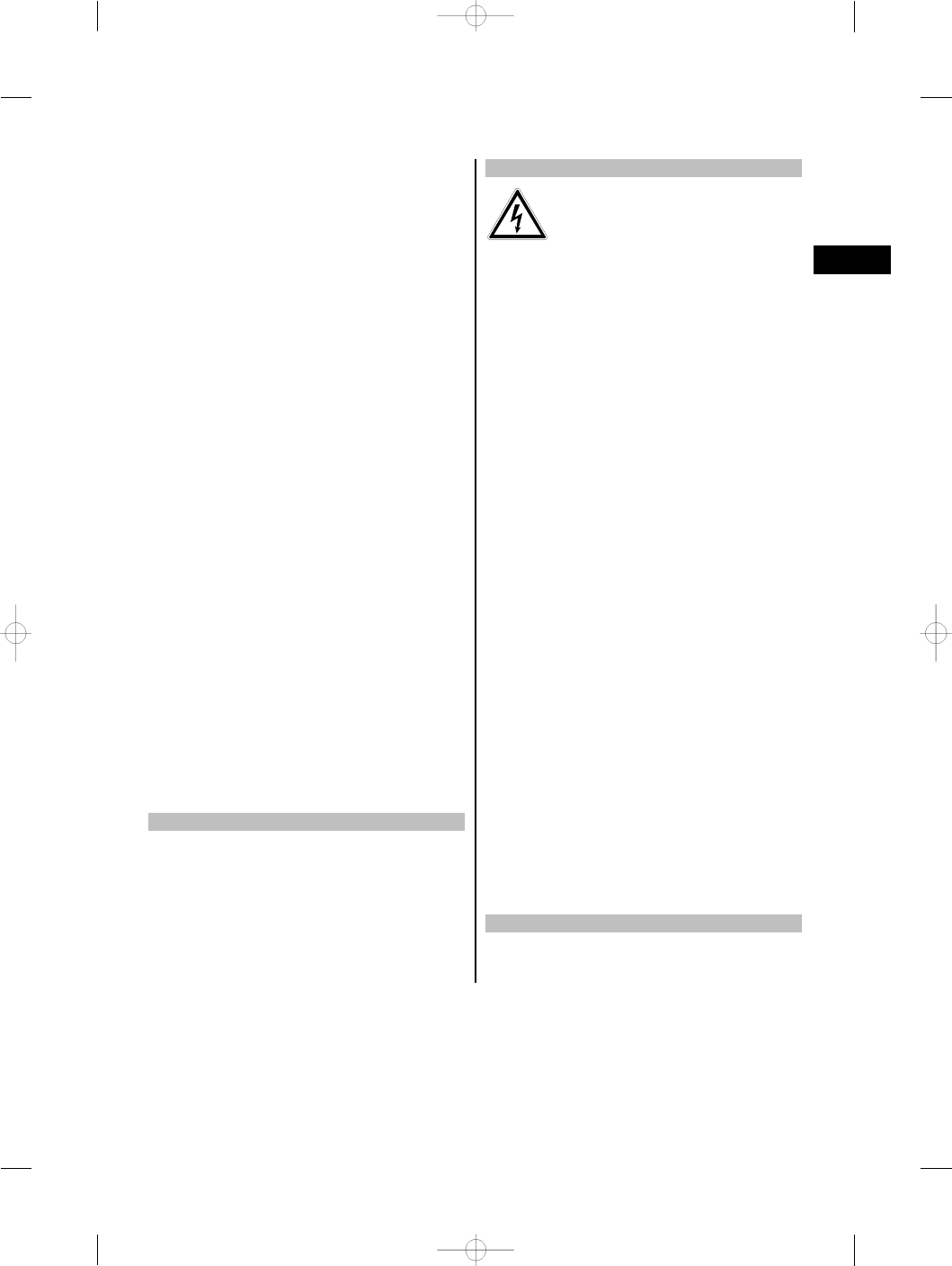
d) Improve the blood circulation in your fingers by
relaxing your hands and exercising your fingers
during breaks between working.
e) Always lead the supply cord and extension cord
away from the power tool to the rear while
working. Thishelps toavoid tripping overthe cord
while working.
f) Children must be instructed not to play with the
appliance.
g) The appliance is not intended for use by chil-
dren, by debilitated persons or those who have
received no instruction or training.
h) WARNING: Somedustcreated bygrinding, sand-
ing, cutting and drilling contains chemicals
known to cause cancer, birth defects, infertil-
ity or other reproductive harm; or serious and
permanent respiratory or other injury. Some ex-
amples of these chemicals are: lead from lead-
based paints, crystalline silica from bricks, con-
crete and other masonry products and natural
stone, arsenic and chromium from chemically-
treated lumber. Your risk from these exposures
varies, depending on how often you do this type
of work. To reduce exposure to these chemi-
cals, the operator and bystanders should work
in a well-ventilated area, work with approved
safety equipment, such as respiratory protection
appropriate for the type of dust generated, and
designed to filter out microscopic particles and
direct dust away from the face and body. Avoid
prolonged contact with dust. Wear protective
clothing and wash exposed areas with soap and
water. Allowing dust to get intoyour mouth, eyes,
or toremain on your skinmay promote absorption
of harmful chemicals.
5.2.3 Power tool use and care
a) Check that the insert tools used are compatible
with the chuck system and that they are secured
in the chuck correctly.
b) In case of an interruption in the electric supply:
Switch the power tool off and unplug the supply
cord. This will prevent accidental restarting when
the electric power returns.
c) Always work from a secure, safe stance.
5.2.4 Electrical safety
a) Before beginning work, check the working area
(e.g. using a metal detector) to ensure that no
concealed electriccables or gasand water pipes
are present.External metalparts of thepower tool
may become live, for example, when an electric
cable is damaged accidentally. This presents a
serious risk of electric shock.
b) Check the power tool’s supply cord at regular
intervals andhave it replaced bya qualified spe-
cialist iffound tobe damaged.If thepower tool’s
supply cord is damaged it must be replaced with
a specially-prepared supply cord available from
Hilti Customer Service. Check extension cords
at regular intervals and replace them if found
to be damaged. Do not touch the supply cord or
extension cord if it is damaged while working.
Disconnect the supply cord plug from the power
outlet. Damaged supply cords or extension cords
present a risk of electric shock.
c) Dirty or dusty power tools which have been
used frequently for work on conductive materi-
als should be checked at regular intervals at a
Hilti Service Center. Under unfavorable circum-
stances, dampnessor dust adheringto thesurface
of the power tool, especially dust from conductive
materials, may present a risk of electric shock.
d) When working outdoors with an electric tool
check to ensure that the tool is connected to the
electric supply by way of a ground fault circuit
interrupter (GFCI) with a rating of max. 30 mA
(tripping current). Use of a ground fault circuit
interrupter reduces the risk of electric shock.
e) Use of a ground fault circuit interrupter (GFCI)
with a maximum tripping current of 30 mA is
recommended.
5.2.5 Work area
a) Ensure that the workplace is well lit.
en
7


















